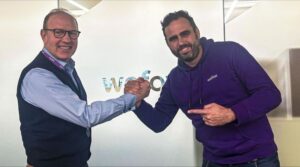You can hardly open up the business section of any respectable newspaper without seeing a piece on how one industry or another is adjusting (often with varying degrees of success) to court and cater to Gen Z as its members arrive on the market en masse.
With Millennials moving ever further into middle age and the eldest members of Gen Z now in their mid-twenties, the disassociation of the former with youth has seemingly caught some industries unawares. Like all generations, Gen Z are distinct from their predecessors in their preferences and perceptions, but they seem to be uniquely difficult to capture or even characterise as a market.
Insurance companies are facing this conundrum too. Young people aren’t buying what insurance companies are selling right now, and on the whole find traditional insurance offerings irrelevant to their needs. Raised on the internet, stodgy marketing tactics fall flat with them instantly, and there’s a base expectation of personalised and frictionless digital experiences. Insurance companies need to sell that if they’re going to even endeavour to service Gen Z.
Embracing boring: why honesty wins
On its face, insurance is boring. Nothing about the product of insurance has a wow factor. Insurance often markets itself and almost always sells on the back of the somewhat old-fashioned and safety-oriented principle of peace of mind. This isn’t a bad thing, and it shouldn’t be swept away in some effort to make insurance more sexy than it is.
Gen Z have keen noses for inauthenticity, but it would also be wrong to say they are allergic to sponsored content or activations. They appreciate honesty and sincerity, and they don’t necessarily believe the two can’t coexist.
Insurance companies can and should differentiate themselves by being upfront about insurance’s non-sexiness, shall we say. There’s an element of self-awareness here that feels sincere and is actually ripe for humour-based marketing efforts. Gen Z can and will watch a TikTok made by an account they like that leans into this. Marketing like this can be candid without being condescending, and funny without being cloying. And since Gen Z is reached almost exclusively on the internet, your marketing has to stand out with its sincerity – not only from other companies in your industry, but from all the content coming through their feed.
With any kind of marketing and any kind of audience, the less your audience feels like you’re trying overly hard to convince them of something, the more likely they are to actually listen to your messaging. This is doubly true of Gen Z, who are already more distrustful than other generations of corporations, advertising, and authority on the whole.
Building trust with Gen Z
Succeeding with Gen Z depends on recognising the realities of their situation. This generation uses digital banking and payment services with ease, and has come to expect mobile-forward financial capabilities from insurance providers. If your marketing gets Gen Z on your platform, the level of digitisation and personalisation of your tools will keep them there. Seamlessness is the norm for Gen Z, and it needs to be the norm for their insurance.
Furthermore, recognising that Gen Z is in a difficult position financially – earning less, taking on more debt, and struggling with inflation, according to CNN – and designing products with these hurdles in mind is crucial to building and maintaining trust. Gen Z are spending more on rent than Millennials and having similar struggles with student loans. All this has made stability and safety a priority for them, especially financial stability. Insurance is, at its core, safety-as-product. You build trust with Gen Z by proving through your marketing and your products that you understand what their lives are like.
Designing products for the digital native that resonate with their values
Everything from locked-in rates to discounts for referring friends to rental insurance designed for younger renters can have a real effect. Homeowners packages are irrelevant. Easily adjusted micro-coverage for apartments and electronics, however, are hugely relevant.
Insurance companies don’t need to turn away from the core appeal of offering safety. They just need to be practical and sincere about it. It helps to be funny. Don’t talk to them like they’re stupid just because they’re inexperienced in the insurance world. If anything, their inexperience makes them more wary as adopters and harder to convince.
Gen Z aren’t safety-averse, and they definitely aren’t insurance-averse. But they must be marketed to correctly and intelligently, and that marketing has to be sincere and express why insurance is helpful to have in the first place. The targeted offerings can’t come later. This is a package deal. Part of this comes down to “treat Gen Z like the smart and individual generation that they are,” which is an incredibly simple strategy yet one that the insurance industry at large is struggling to grasp.
The old ways of marketing and the products sold to their parents and grandparents aren’t going to cut it anymore. That’s no cause for alarm. It’s just a very good reason for change.

Meeri Savolainen is Founder and CEO of INZMO a Berlin insurtech specialising in embedded insurance solutions across the consumer electronics, real estate, mobility and automotive sectors. A former corporate lawyer with Ernst & Young, Meeri had no previous experience of insurance before starting INZMO in 2016. Today, her business is backed by Swiss insurance giant, Helvetia, and has served over 100,000 customers. At INZMO, Meeri oversees the overall strategy for the business and is responsible for legal matters, company culture, marketing and financial affairs. Meeri has a Law degree from the University of Tartu and studied leadership and business strategy at Stanford University Graduate School of Business and Harvard Business School.










